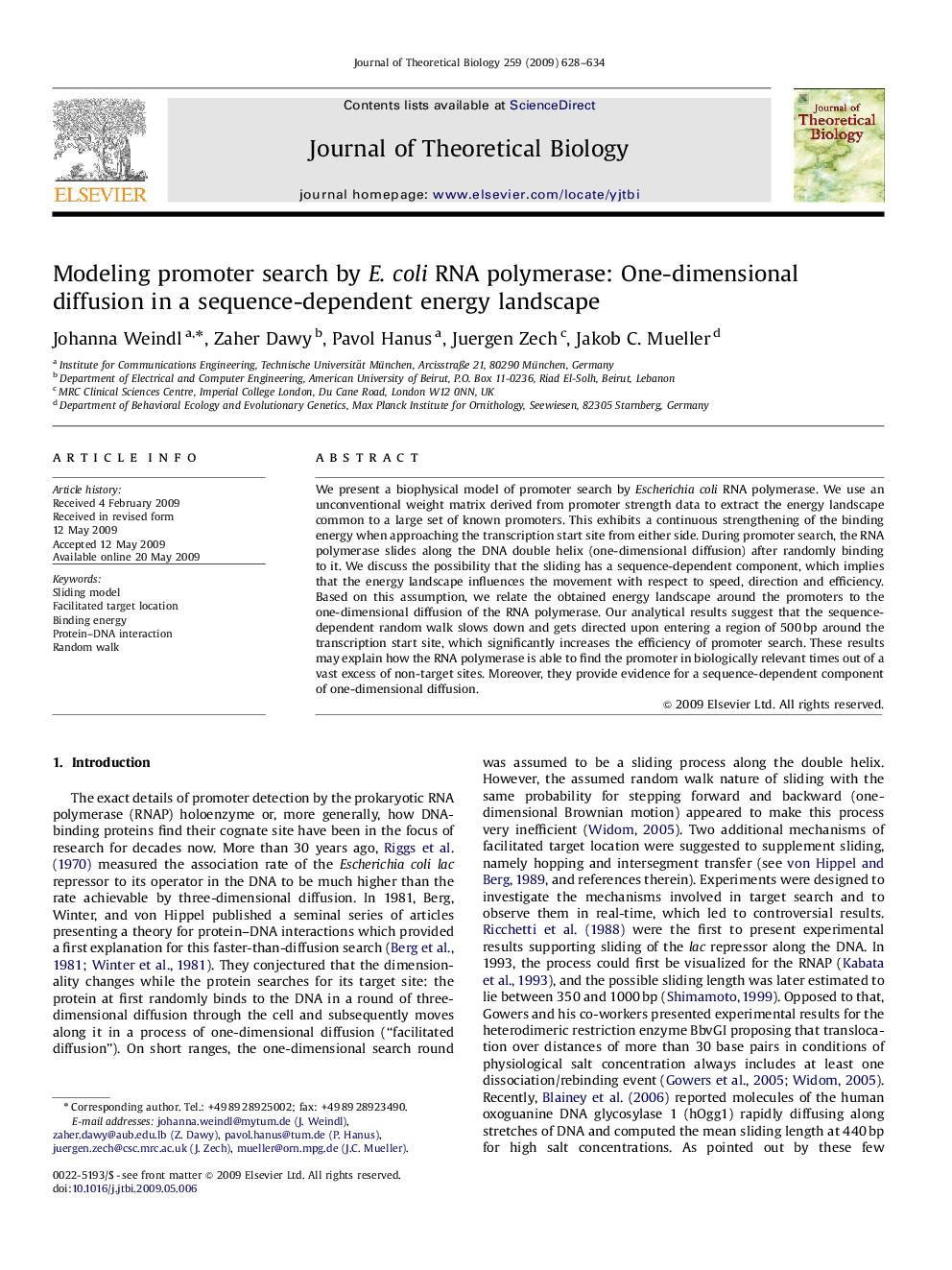| Article ID | Journal | Published Year | Pages | File Type |
|---|---|---|---|---|
| 4498092 | Journal of Theoretical Biology | 2009 | 7 Pages |
Abstract
We present a biophysical model of promoter search by Escherichia coli RNA polymerase. We use an unconventional weight matrix derived from promoter strength data to extract the energy landscape common to a large set of known promoters. This exhibits a continuous strengthening of the binding energy when approaching the transcription start site from either side. During promoter search, the RNA polymerase slides along the DNA double helix (one-dimensional diffusion) after randomly binding to it. We discuss the possibility that the sliding has a sequence-dependent component, which implies that the energy landscape influences the movement with respect to speed, direction and efficiency. Based on this assumption, we relate the obtained energy landscape around the promoters to the one-dimensional diffusion of the RNA polymerase. Our analytical results suggest that the sequence-dependent random walk slows down and gets directed upon entering a region of 500Â bp around the transcription start site, which significantly increases the efficiency of promoter search. These results may explain how the RNA polymerase is able to find the promoter in biologically relevant times out of a vast excess of non-target sites. Moreover, they provide evidence for a sequence-dependent component of one-dimensional diffusion.
Related Topics
Life Sciences
Agricultural and Biological Sciences
Agricultural and Biological Sciences (General)
Authors
Johanna Weindl, Zaher Dawy, Pavol Hanus, Juergen Zech, Jakob C. Mueller,
